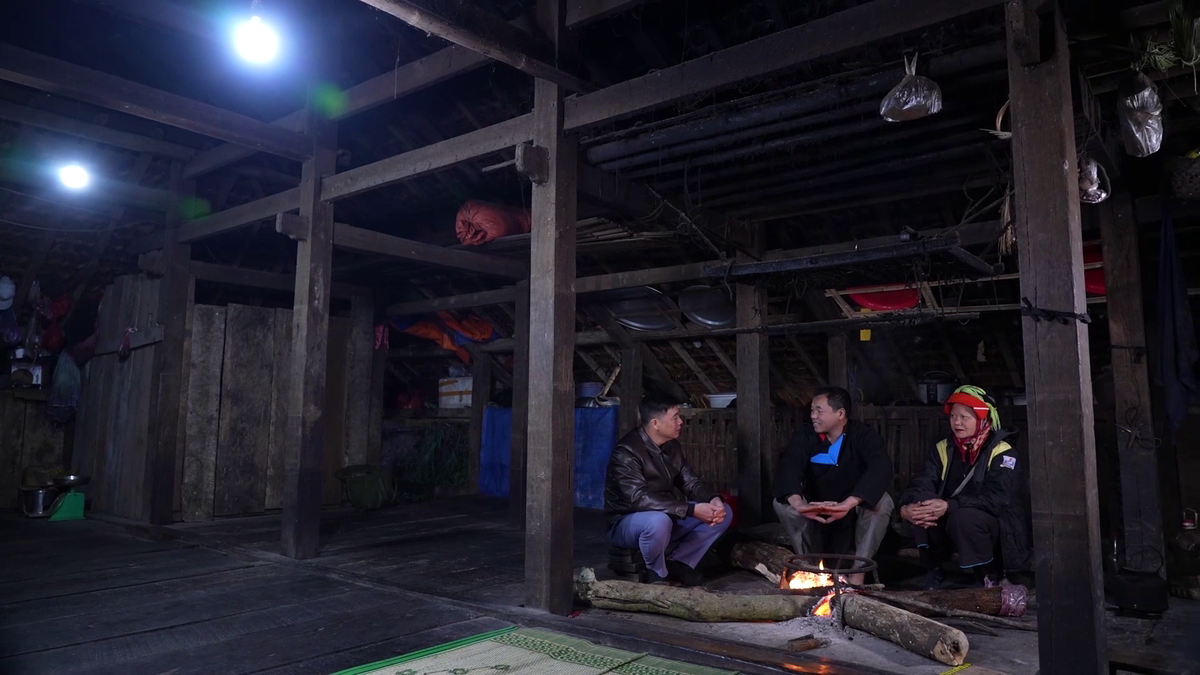Determining that the implementation of national target programs (NTPs) will create a “push” to help improve people’s lives and change the face of rural and mountainous areas, in recent years, Quang Tri province has paid attention to implementing them. However, up to now, the disbursement of capital for the 3 NTPs in the area has encountered difficulties and obstacles, leading to slow progress.

Pilot model of growing medicinal sage plants by ethnic minorities in Ban Chua, Cam Tuyen commune, Cam Lo district - Photo: ML
According to the Department of Planning and Investment, as of June 25, 2024, Quang Tri province has disbursed VND 94,836 billion in capital for national target programs, reaching 25.7% of the plan. Specifically, the whole province has disbursed VND 31,092 billion in capital for the Sustainable Poverty Reduction Program, reaching 33.7%; VND 43,050 billion in capital for the Socio-Economic Development Program for Ethnic Minorities and Mountainous Areas, reaching 24.1%; VND 20,694 billion in capital for the New Rural Development Program, reaching 21.1%.
Although the disbursement rate in the first 6 months of 2024 increased compared to previous years, it is still slower than planned. The implementation of national target programs in localities still faces many difficulties.
The main reason is that the guidance documents for implementing the program from central ministries and branches are not timely and specific; some contents are still overlapping and slow to be revised and supplemented.
Specifically, for the Socio-Economic Development Program for Ethnic Minorities and Mountainous Areas, support for housing, residential land, and production land is still difficult due to the limited land fund in the communes. Therefore, it is difficult for localities to carry out the work of creating land, reclaiming production land and allocating it to beneficiary households.
In addition, the overlapping land origin between individuals and businesses that has not been separated, land that has not been transferred from forestry companies... also greatly affects the disbursement progress of projects in this program.
Planning, arranging and stabilizing population requires a lot of time to complete procedures because localities must register annual land use plans, supplement land use plans, procedures for converting forest land to other purposes and alternative forest planting plans for projects using forest land as a basis for implementing land recovery, compensation, support and resettlement.
Regulations on supporting the development of production according to the value chain are not suitable for practice. According to Circular 02/2023/TT-UBDT of the Ethnic Committee, only enterprises (production, processing, trading) and cooperatives participating in the value chain located in extremely disadvantaged communes and must have at least 70% of the total workforce being ethnic minorities.
This regulation makes value chain-hosting enterprises that do not have headquarters located in the program's area not eligible for support, while calling on enterprises and cooperatives to act as linking host units still faces many difficulties, especially in mountainous areas.
On the other hand, the program only supports poor and near-poor households, while the participation of households with good economic performance is essential because they are the “locomotives” leading and supporting other households in the production group to improve. However, there is no appropriate support mechanism to motivate households with good economic performance to participate in the program.
Regarding the Sustainable Poverty Reduction Program, the vocational training subjects supported by the regulations are not unified, and there are problems in identifying low-income workers. The support level for vocational training subjects according to Decision No. 46/2015/QD-TTg of the Prime Minister compared to the current reality is too low, not meeting the minimum needs of vocational training participants.
Currently, the vocational training needs of workers are diverse and not concentrated, so it is difficult to open vocational training classes because there are few participants.
Currently, central ministries and branches have not issued regulations on technical and economic standards for areas supporting the development of non-agricultural production, making it difficult for localities to organize implementation. The staff working on poverty reduction has no fixed staff and changes frequently, affecting the monitoring, synthesis, evaluation as well as the development of plans and proposals for solutions to implement the program.
For the New Rural Program, the set of advanced New Rural criteria has many difficult targets to implement, requiring a lot of resources and time to complete. The goal of building new rural villages and hamlets in especially disadvantaged communes in ethnic minority and mountainous areas has many challenges.
Currently, the results achieved are much slower than the plan and roadmap that the districts have registered and assigned by the Provincial People's Committee (the goal by 2023 is to have 25 villages in extremely disadvantaged communes meeting the NTM standards, but so far only 4 villages have been recognized as meeting the standards).
Therefore, the province's target of striving to have 43 new rural villages by 2024 and 72 new rural villages by 2025 is very difficult to achieve. The general level of communes in the roadmap to meet the standards in the 2024 - 2025 period is low (only meeting 7 - 14 criteria), there are still many difficult criteria that have not been met, requiring large investment resources.
The implementation of national target programs is extremely important to Quang Tri. Therefore, the sectors and localities in the province need to make efforts, focus on overcoming difficulties, and be more determined in the process of implementing the programs to avoid the situation of "having money but not being able to spend it".
In addition to propaganda work to raise awareness and responsibility to create consensus and response from the people, specialized sectors need to train and guide the contents related to the 3 National Target Programs for grassroots cadres, especially newly issued documents and central documents.
Provincial departments, branches and sectors, based on their assigned functions and tasks, regularly inspect and monitor the implementation results of assigned contents; direct the People's Committees of districts, towns and cities and investors to make detailed disbursement plans for each project and each content to manage progress.
There is not much time left to implement the national target programs for the period 2021 - 2025. In addition to speeding up the disbursement progress of the capital plan arranged in 2024, localities need to review the work that has been done and not done, grasp the existing problems, difficulties and obstacles arising from the practice at the grassroots level to propose timely solutions.
Mai Lam
Source: https://baoquangtri.vn/go-kho-de-giai-ngan-kip-thoi-von-cac-chuong-trinh-muc-tieu-quoc-gia-186874.htm





























































































![[Infographic] In 2025, 47 products will achieve national OCOP](https://vphoto.vietnam.vn/thumb/402x226/vietnam/resource/IMAGE/2025/7/16/5d672398b0744db3ab920e05db8e5b7d)





Comment (0)